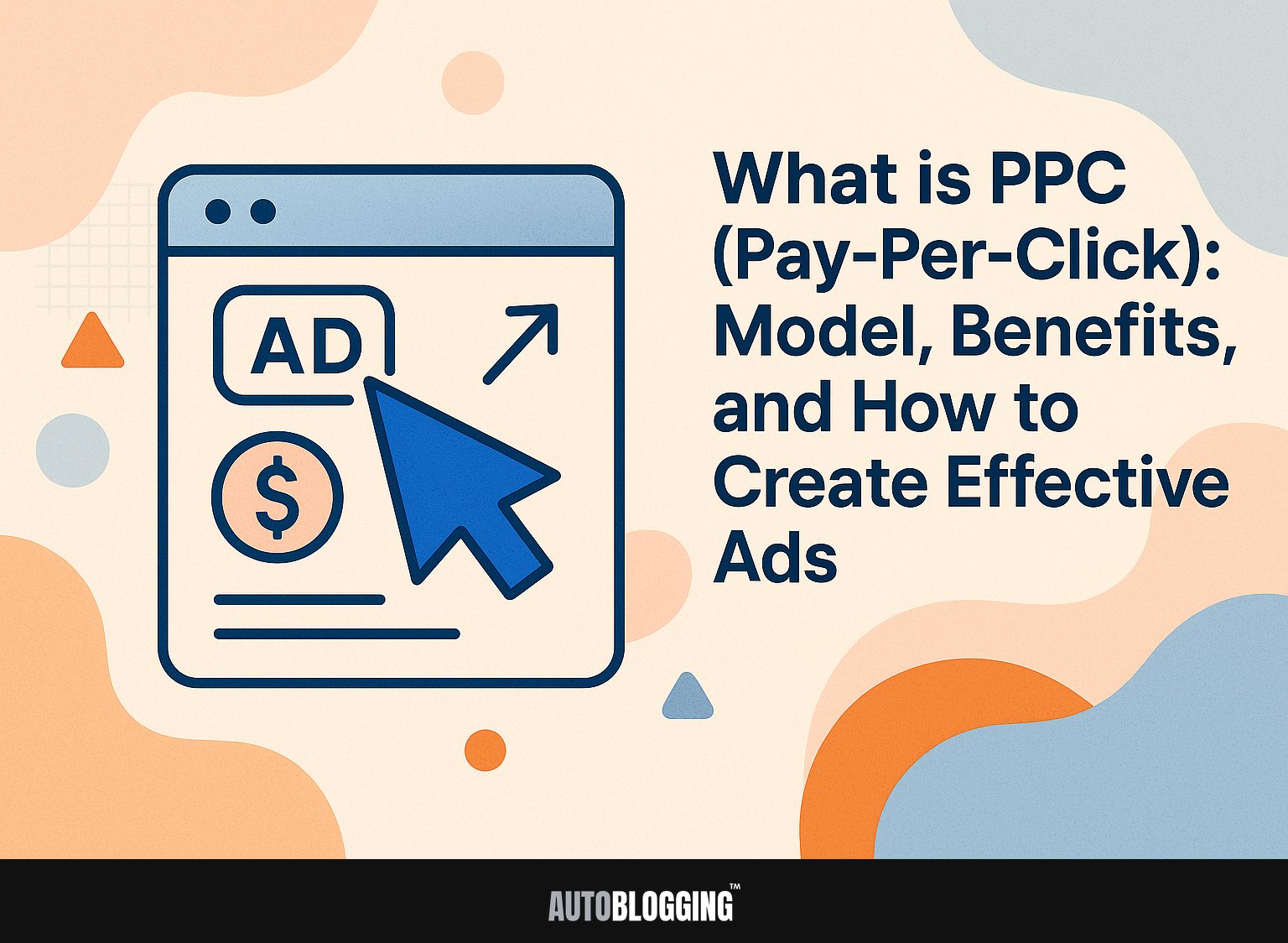
Use PPC marketing to greatly improve your online advertising efforts. Pay-per-click, a powerful advertising model employed by platforms like Google Ads and Facebook, allows businesses to drive targeted traffic instantly. In this article, you’ll learn about PPC, its advantages, and useful advice for making ads that get results. Whether you’re new to online advertising or looking to improve your approach, this guide will give you the knowledge you need to do well in the challenging online advertising market.
Key Takeaways:
- PPC (Pay-Per-Click) is an online advertising method where businesses pay whenever someone clicks on their advertisement. This approach is budget-friendly for bringing specific visitors to a website.
- The benefits of PPC advertising include fast results, accurate targeting, control over spending, and the ability to track and evaluate outcomes, making it a useful tool for businesses of all sizes.
- To make effective PPC ads, do detailed keyword research, write engaging ad content, create easy-to-use landing pages, and use ad extensions to increase click-through rates and conversions. Regular checks and improvements are important for success.
Contents
- The PPC Model
- Benefits of PPC Advertising
- Creating Effective PPC Ads
- Optimizing PPC Campaigns
- Common Mistakes to Avoid in PPC
- Frequently Asked Questions
- 1. What is PPC (Pay-Per-Click) and how does it work?
- 2. What are the benefits of using PPC for advertising?
- 3. What is the most effective PPC model for advertisers?
- 4. How can I create effective PPC ads for my business?
- 5. What are some best practices for managing PPC campaigns?
- 6. How can I measure the success of my PPC campaigns?
1. Definition of Pay-Per-Click
Pay-Per-Click (PPC) is an online advertising model where marketers pay a fee each time their ad is clicked, allowing for instant traffic acquisition. This model functions effectively through platforms like Google Ads, which lets advertisers bid on keywords.
For example, if a business sells shoes, it might bid on terms like “running shoes”. The ad is then displayed when users search these terms.
Advertisers control their budgets, only paying when users engage with their ads. To get the most out of PPC campaigns, use tools like Google Keyword Planner to find keywords, and regularly check campaign performance through Google Analytics to improve targeting methods.
2. Brief History of PPC Advertising
PPC advertising emerged in the late 1990s with platforms like Google AdWords, revolutionizing digital marketing by offering advertisers targeted reach and measurable results.
Since it started, PPC has changed a lot. In the early 2000s, bidding strategies that automatically change based on performance data allowed advertisers to better manage their spending and get more value from their investments.
In the 2010s, social media sites like Facebook and Instagram became part of the PPC world, allowing very specific ad campaigns based on people’s demographics and interests.
Today, because of advances in AI and machine learning, advertisers can use tools like Google Ads Smart Bidding to manage advertising budgets more effectively and improve conversion rates. This demonstrates how PPC adjusts to evolving marketing needs.
The PPC Model
Grasping the PPC model is necessary for using online advertising well. It deals with how ads are shown, aimed at, and bid on.
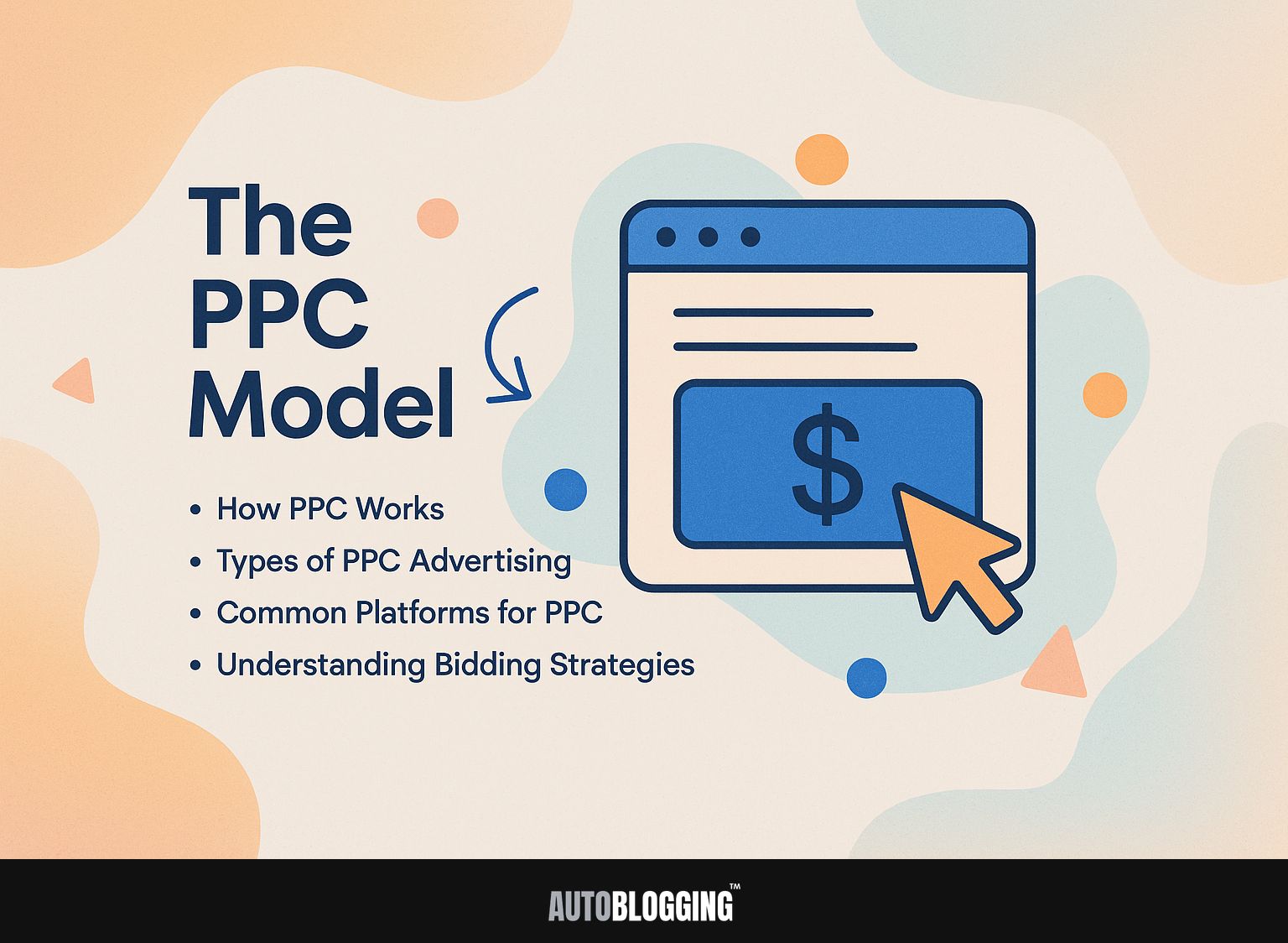
1. How PPC Works
PPC operates through an auction system where advertisers bid on keywords, influencing their ad placement based on a combination of bid amount and Quality Score.
The auction begins when a user enters a search query. Advertisers compete by placing their bids for relevant keywords. A high bid isn’t enough to get the best ad position; the Quality Score-based on how relevant the ad is, click rates, and the landing page experience-also matters.
For example, two advertisers bidding $1 can have different placements if one has a Quality Score of 8 and the other 4. The advertiser with a higher Quality Score can spend less and still get more exposure. It’s important to improve ad content and targeting.
2. Types of PPC Advertising
PPC advertising encompasses various types including search ads, display ads, and social media ads, each serving distinct marketing objectives.
Search ads, like Google Ads, are perfect for targeting users with high intent, appearing when specific keywords are queried. For instance, a local bakery could use these ads to attract customers looking for ‘fresh pastries near me.’
Display ads, often seen on websites, are effective for brand visibility and remarketing products to users who have previously visited your site.
On platforms like Facebook, social media ads excel in building brand awareness through visually engaging content, helping businesses reach a broader demographic, such as targeting young adults for fashion products.
3. Common Platforms for PPC
Leading platforms for PPC include Google Ads, Facebook Ads, and Microsoft Advertising, each offering unique features and audience targeting capabilities.
Google Ads boasts extensive reach through Google Search and Display networks, ideal for driving website traffic. Facebook Ads, with its rich demographic data, excels in targeting niche audiences and driving engagement via visually appealing ad formats.
In contrast, Microsoft Advertising caters to a more professional audience, often seen as a cost-effective alternative with less competition in B2B spaces.
Businesses should choose based on their goals: opt for Google Ads for wide visibility, Facebook for brand engagement, and Microsoft for cost-effective B2B targeting.
4. Understanding Bidding Strategies
Successful PPC campaigns depend on knowing different bidding strategies like setting bids yourself, letting the system decide bids, and aiming for a specific cost per action.
Each strategy serves different purposes. Manual bidding gives you full control over keyword bids, which is useful for campaigns with high-value keywords.
Automated bidding, such as Target ROAS, changes bids using existing data, making it perfect for big campaigns that want the most conversions without needing regular checks.
Target CPA focuses on achieving a specific cost per acquisition, perfect for campaigns with established conversion metrics.
Look at your goals: if keeping control is important, pick manual. To reach a bigger audience, use automatic bidding. Test different strategies to find the best fit for your unique objectives.
Benefits of PPC Advertising
PPC advertising offers advantages such as quick website visits, accurate audience targeting, and thorough performance tracking, leading to effective campaigns. For those interested in optimizing their organic search strategies alongside PPC, exploring what is Organic Search: Definition, Benefits, and How to Optimize can provide valuable insights into achieving a balanced marketing approach.
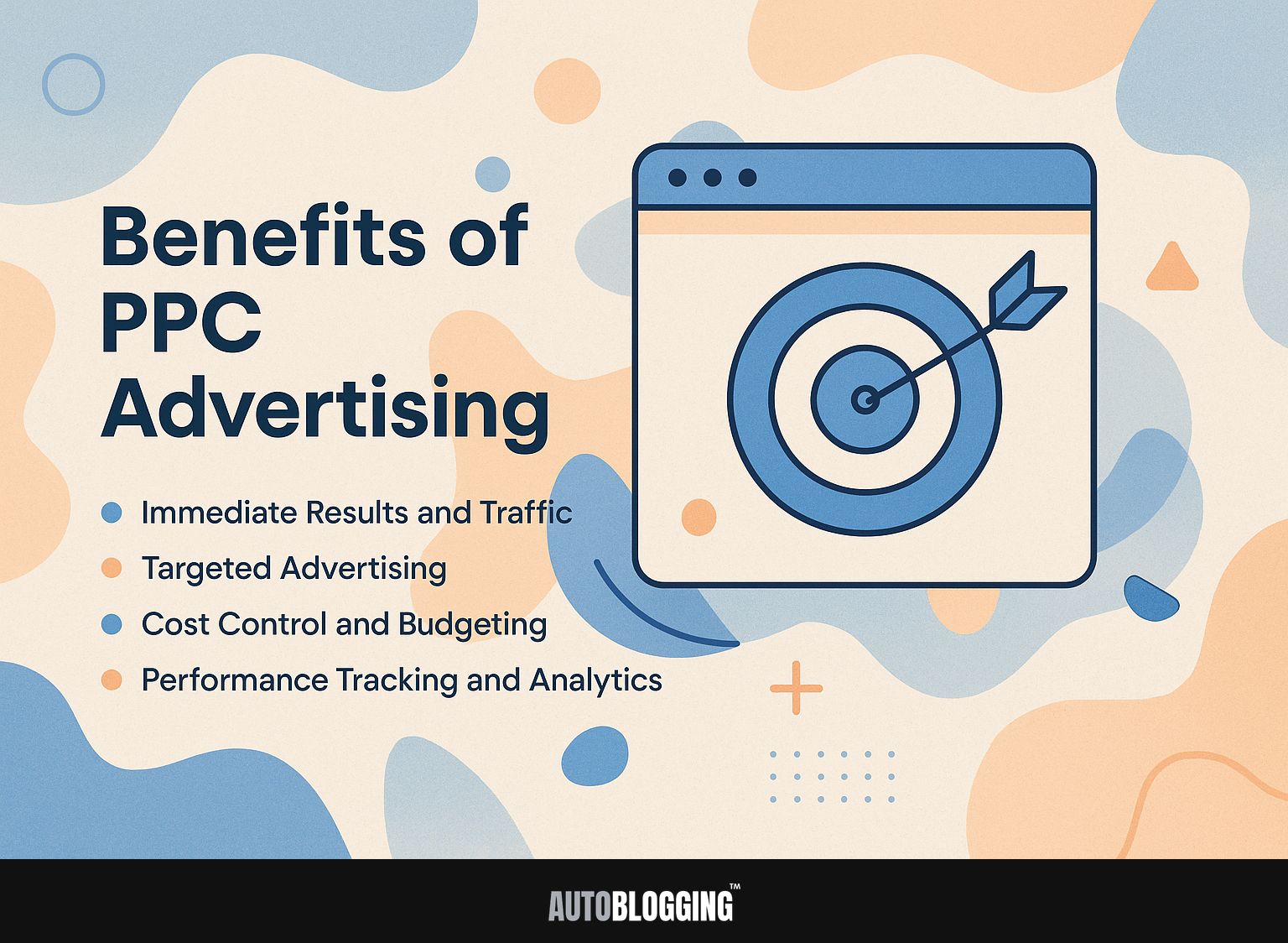
1. Immediate Results and Traffic
PPC advertising can generate immediate website traffic, with campaigns often producing results within hours of launch, as opposed to organic methods that take time.
For instance, a 2023 case study of Company X revealed a 150% increase in website visitors within just 48 hours of initiating its Google Ads campaign.
By targeting specific keywords related to their niche, they effectively reached their audience. Tools like Google Ads and SEMrush helped them focus their advertising efforts, making sure ads appeared for the appropriate audience.
By regularly checking ad results and changing bids according to click-through rates, they made their budget work better. With these approaches, companies can experience a quick increase in visitors without the long delay typical of organic growth.
2. Targeted Advertising
PPC enables advertisers to target specific audiences based on demographics, interests, and search behavior, ensuring their ads reach potential customers effectively.
Marketers can use Google Ads Audience Segmentation to create specific campaigns that greatly increase conversion rates.
Using in-market audiences helps advertisers connect with people who are looking for certain products, which can lead to more interactions. Remarketing lists can re-engage past site visitors, reminding them of products they viewed.
By focusing on specific demographic and interest groups, campaigns can be more accurate. Using these strategies, businesses often see conversion rates go up by as much as 50%, making targeted advertising an essential part of any online marketing plan.
3. Cost Control and Budgeting
PPC lets advertisers control costs by setting daily budgets, capping spending, and changing bids based on how the campaign is doing.
To develop a flexible budget using Google Ads, start by utilizing the Keyword Planner tool. This allows you to research and estimate costs for different keywords.
Next, set your daily budget, adjusting it based on performance metrics in the dashboard. Monitor key indicators like Cost-Per-Click (CPC) and Click-Through Rate (CTR) weekly.
Use Google Ads scripts to automatically send notifications if your budget goes over the limit, so you can make changes right away. Using these methods, you can improve your spending plan successfully.
4. Performance Tracking and Analytics
With PPC, advertisers can use strong performance data to monitor figures like click-through rate (CTR), conversion rate, and return on investment (ROI).
To successfully track these metrics, tools such as Google Analytics and SEMrush are extremely useful. Google Analytics allows you to set conversion goals and track user behavior, highlighting which ads lead to the most conversions.
Meanwhile, SEMrush offers detailed keyword analysis and competitive information, which helps you improve your targeting strategies. Regularly analyze your CTR; anything below 1% might require adjustments in your ad copy or targeting.
Knowing these numbers helps you make decisions based on data, which makes your PPC campaign work better.
Creating Effective PPC Ads
Creating effective PPC ads involves planning keyword research, writing ad text, designing the landing page, and using ad extensions. To enhance the performance of your ad campaigns, consider how elements like meta descriptions play a role in attracting clicks and conversions. Implement this by following the methodology in our technical guide to meta description best practices.
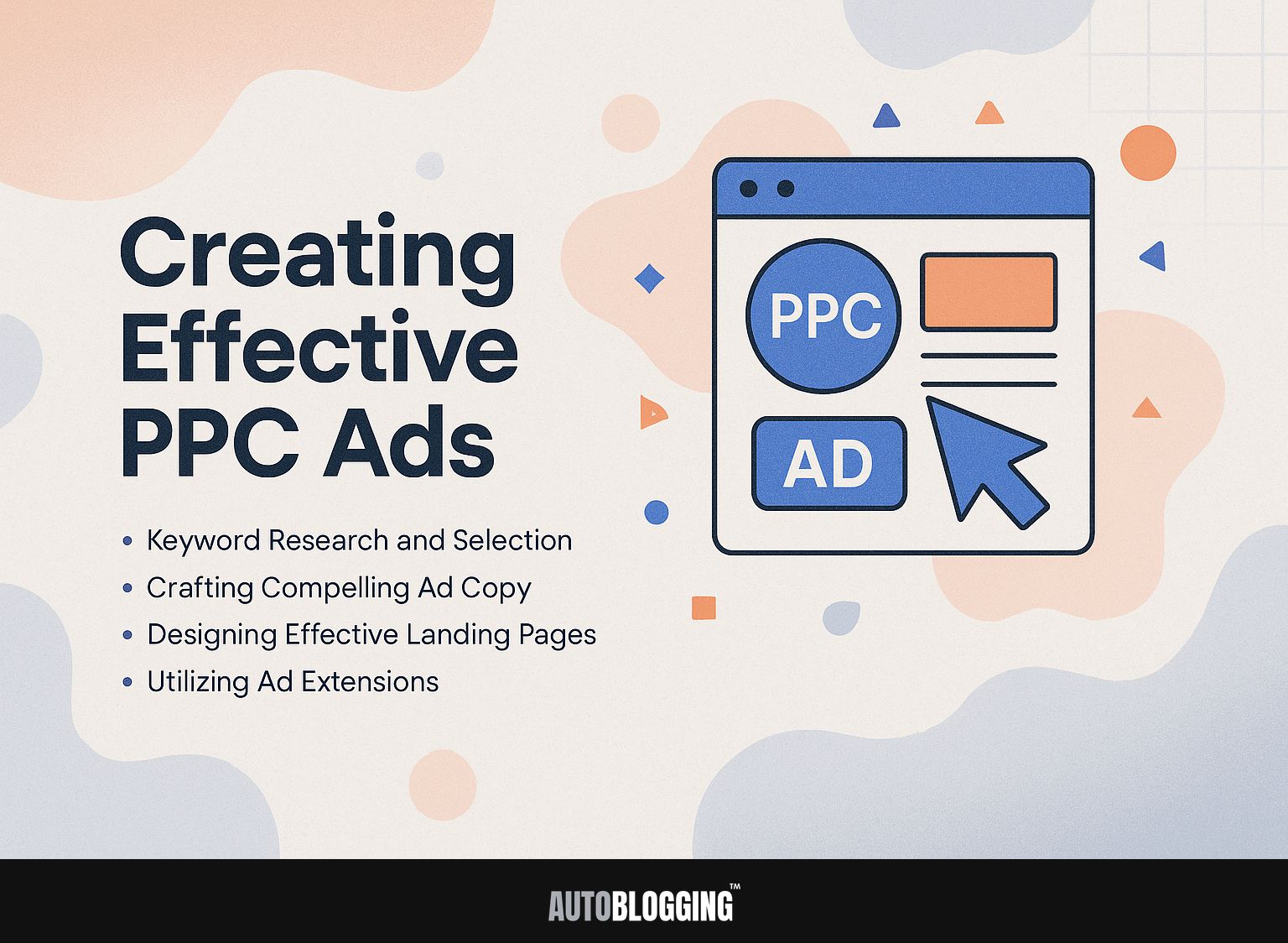
1. Keyword Research and Selection
Effective keyword research is fundamental to successful PPC campaigns, guiding ad targeting and ensuring relevance to user searches.
To begin your keyword research, use Google Keyword Planner to see search volume and competition levels. Enter a seed keyword related to your business, and look for long-tail keywords with low competition but decent search volume, like ‘best running shoes for flat feet’.
Ahrefs can show the keywords that competitors use. Analyze your competitors’ top-performing content and find gaps in their strategies. Use these tools to improve your keyword list, focusing on details that can result in higher returns.
2. Crafting Compelling Ad Copy
Engaging ad text is important in PPC because it affects the click-through rate (CTR) and the overall success of a campaign, needing a mix of creativity and planning.
To write effective ad copy, use the AIDA model: start with a headline that grabs attention, then include content that builds interest.
For example, a travel ad might start with “Find Hidden Treasures Across Europe!” Then, spark interest by pointing out benefits, like special discounts or one-of-a-kind experiences.
End with a direct invitation, such as “Reserve Your Spot Today!” Tools like Canva can help you make appealing images, and Google Ads offers information on useful keywords to improve your text.
3. Designing Effective Landing Pages
The success of a PPC ad often depends on how good its landing page is, which should be improved for user experience and conversion. Key elements of high-converting landing pages include fast loading times, clear calls-to-action (CTAs), and mobile responsiveness.
For instance, incorporating a visually appealing CTA button can increase conversion rates by up to 30%. It’s important for the page to load in three seconds since research indicates that a one-second delay can cause a 7% decrease in sales.
A mobile-friendly design improves user experience and meets the needs of the increasing number of people visiting websites on their phones. Brands like Dropbox and Airbnb exemplify these principles effectively.
4. Utilizing Ad Extensions
Ad extensions in Google Ads make ads more noticeable and engaging by giving extra details to people who might buy, which improves how well the ads do. Two essential types of ad extensions are site link extensions and call extensions.
Site link extensions allow advertisers to direct customers to specific pages on their website, helping them find what they want and increasing the chance of sales.
For instance, a travel agency can link to destination guides, booking pages, and travel tips. Call extensions allow phone numbers to appear with ads, so users can easily call businesses. This is particularly effective for service-based industries, where immediate communication can lead to faster sales.
Optimizing PPC Campaigns
Improving PPC campaigns is a continuous effort that includes testing, watching, and changing different parts to increase results and return on investment. To enhance these campaigns, it’s crucial to understand the importance of keyword strategy. Explore our step-by-step keyword research process to identify untapped opportunities in your niche.
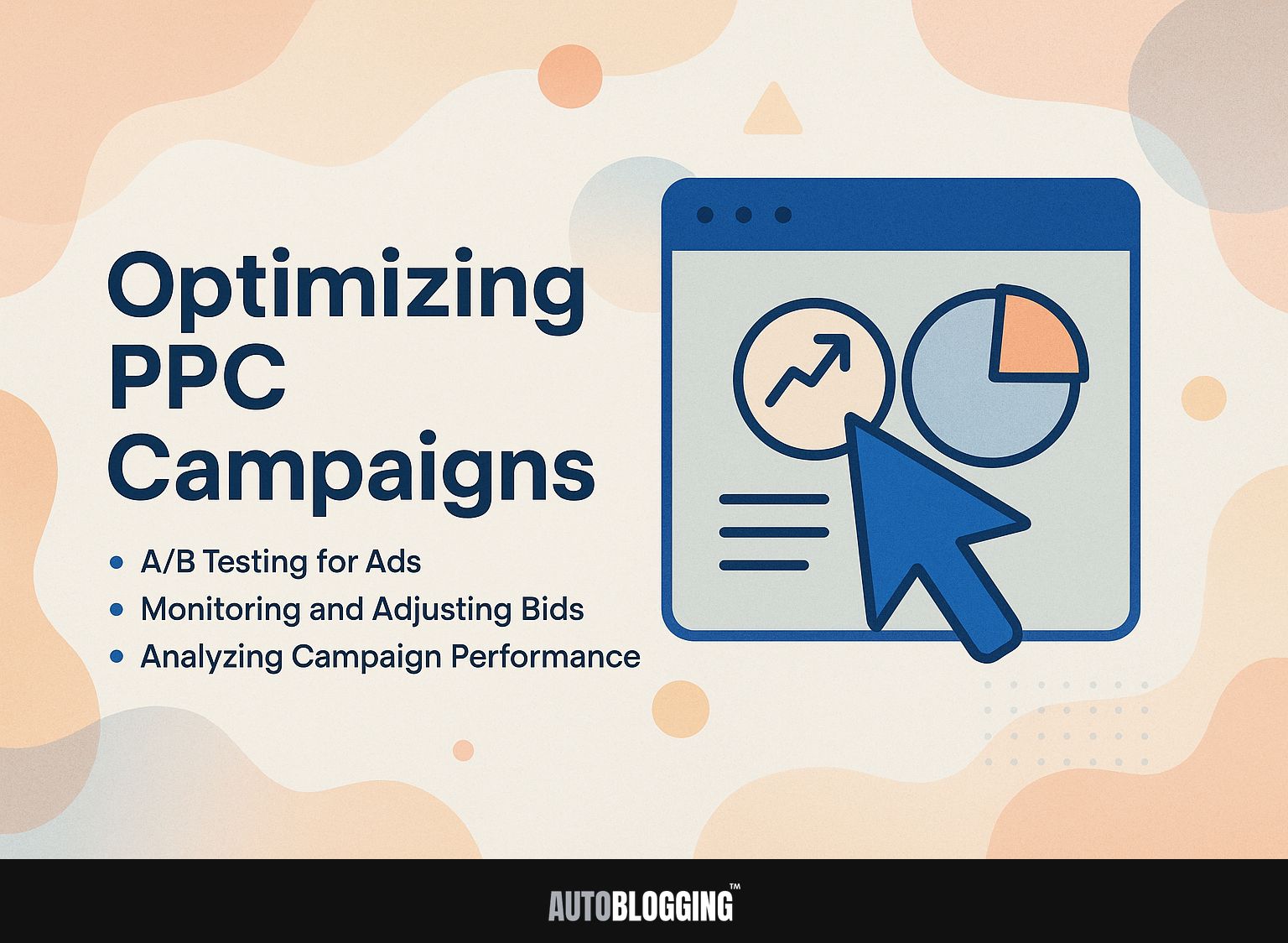
1. A/B Testing for Ads
A/B testing is an effective way to improve PPC ads. It lets marketers compare different ad versions to find out which one works best.
- To successfully run A/B tests, begin by clearly stating what you want to test, like ‘Ad A will have a higher click-through rate than Ad B.’
- Next, choose relevant metrics to measure, like CTR, cost per acquisition, or conversion rates.
- Use A/B testing tools like Google Optimize or Optimizely to simplify your testing process.
- Once you have enough data, look at the results closely to find out why one ad did better.
- Use this information to make better choices for upcoming ad campaigns, making sure each plan is based on data.
2. Monitoring and Adjusting Bids
Regular monitoring and adjustment of bids are essential in PPC, ensuring that campaigns remain competitive and cost-effective in a fluctuating market.
Use tools like Google Ads to monitor how bids are doing. Start by examining key metrics, such as click-through rate (CTR) and conversion rate.
If a keyword’s CTR is below 1%, consider raising its bid to improve visibility. Conversely, for underperforming keywords with high spend and low conversion, reduce the bid or pause them altogether.
Create automatic rules to change bids according to performance limits, letting you respond fast. Regularly reviewing these metrics weekly can lead to more informed decisions and improved ROI.
3. Analyzing Campaign Performance
Looking at how well a campaign is doing means checking important numbers like click-through rate, conversion rates, and return on investment to improve pay-per-click strategies.
- Start by setting up Google Analytics dashboards to track these metrics effectively.
- Focus on configuring custom reports that display click-through rates (CTR) and conversion rates over time.
- Use UTM codes in your ad URLs to collect detailed information.
- Regularly analyze your ROI by comparing the revenue generated to the total ad spend, allowing you to identify profitable keywords and areas needing improvement.
- Arrange monthly meetings to change bids and improve targeting, ensuring your campaign updates according to performance data.
Common Mistakes to Avoid in PPC
Avoiding common mistakes in PPC can greatly improve campaign success and stop unnecessary spending.
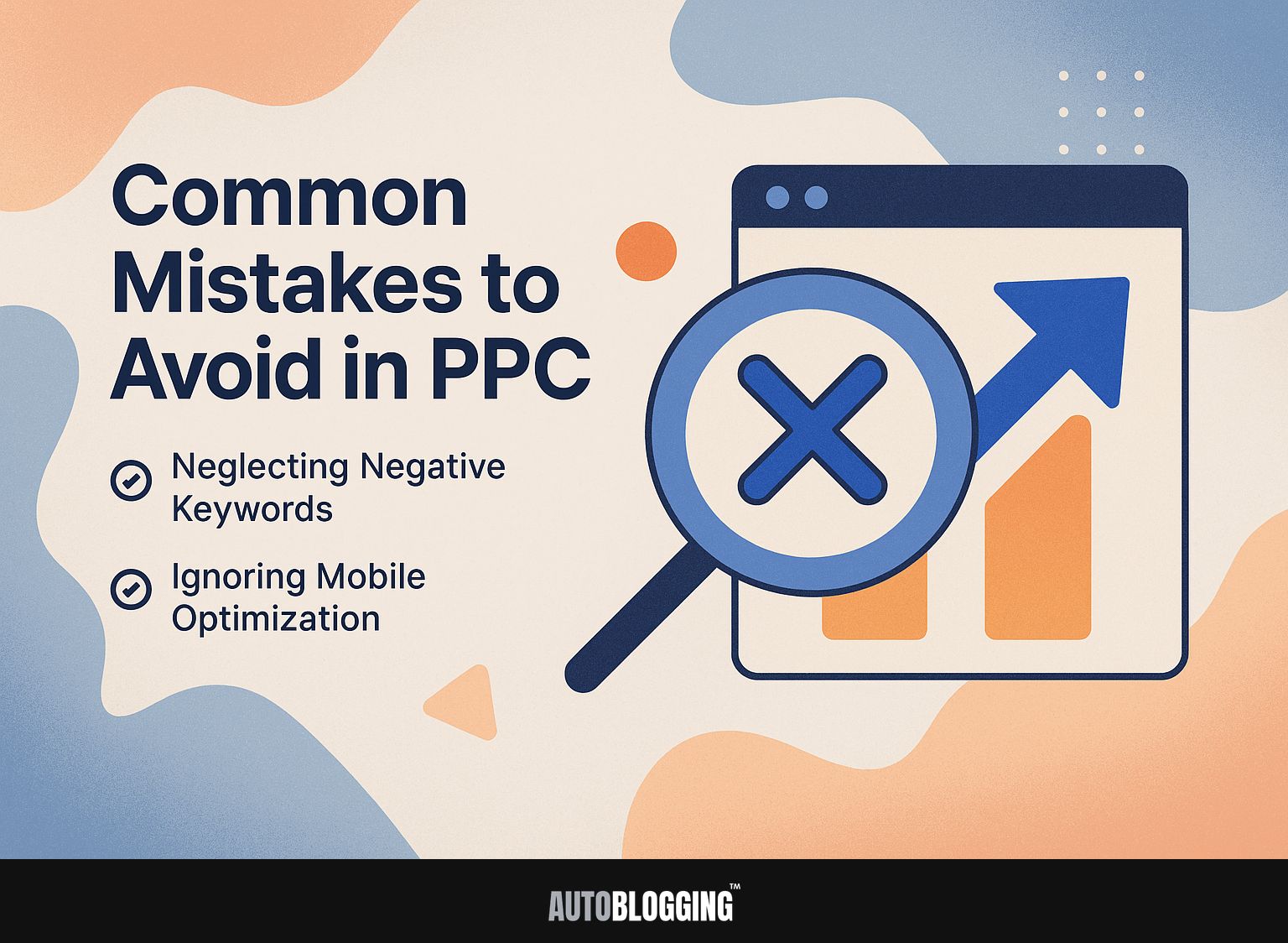
1. Neglecting Negative Keywords
Not using negative keywords can lead to spending money on ads that bring in the wrong audience, which can damage the success of your campaign. Negative keywords are terms you specify to prevent your ads from appearing for specific searches.
To identify them effectively, start by reviewing your search terms report in Google Ads to pinpoint queries that don’t align with your goals. Next, compile these underperforming keywords into a list.
To implement them, go to the ‘Keywords’ tab, choose ‘Negative Keywords,’ and add your list at the ad group or campaign level. Updating and improving this list with the latest information will help your ads target the correct audience.
2. Ignoring Mobile Optimization
In the current mobile market, ignoring mobile optimization can greatly reduce the success of PPC campaigns, since a large part of traffic comes from mobile devices.
To improve user experience, concentrate on three main strategies.
- Make sure your ads grab attention and are short, ideally 90 characters or less, for easy reading on small screens. Use clear prompts, like ‘Shop Now’ or ‘Learn More,’ to encourage fast action.
- Second, make your landing page load faster by compressing images and reducing redirects. Use tools like Google PageSpeed Insights to find ways to make your page faster. Implement responsive design to automatically adjust layouts based on screen size, ensuring a seamless experience across all devices.
This approach will improve both click-through and conversion rates.
Frequently Asked Questions
1. What is PPC (Pay-Per-Click) and how does it work?
PPC, or Pay-Per-Click, is an online advertising model where advertisers pay a fee each time their ad is clicked. It works by placing bids on specific keywords, and the highest bidder earns the top spot in search engine results.
2. What are the benefits of using PPC for advertising?
PPC provides many advantages for advertisers, such as fast results, the ability to target specific groups, control over costs, and the option to monitor and check the performance of campaigns.
3. What is the most effective PPC model for advertisers?
The most common and effective PPC model is the keyword-based model, where advertisers bid on keywords related to their products or services. Advertisers can be confident their ads appear to people looking for those keywords.
4. How can I create effective PPC ads for my business?
To make successful PPC ads, start by doing detailed keyword research to find the most relevant and high-performing keywords for your business. Then, create engaging ad copy and use visually appealing images or videos to capture the attention of your target audience.
5. What are some best practices for managing PPC campaigns?
Effective strategies for handling PPC campaigns involve regularly reviewing and changing bids, consistently testing and improving ad text and audience targeting, and planning a budget and timeline that fit your business aims.
6. How can I measure the success of my PPC campaigns?
To measure the success of your PPC campaigns, track metrics such as click-through rate (CTR), conversion rate, and return on investment (ROI). Use tools like Google Analytics to understand website traffic and how users interact with your PPC ads.
